“The straight line belongs to men, the curved one to God.”
– Antoni Gaudí
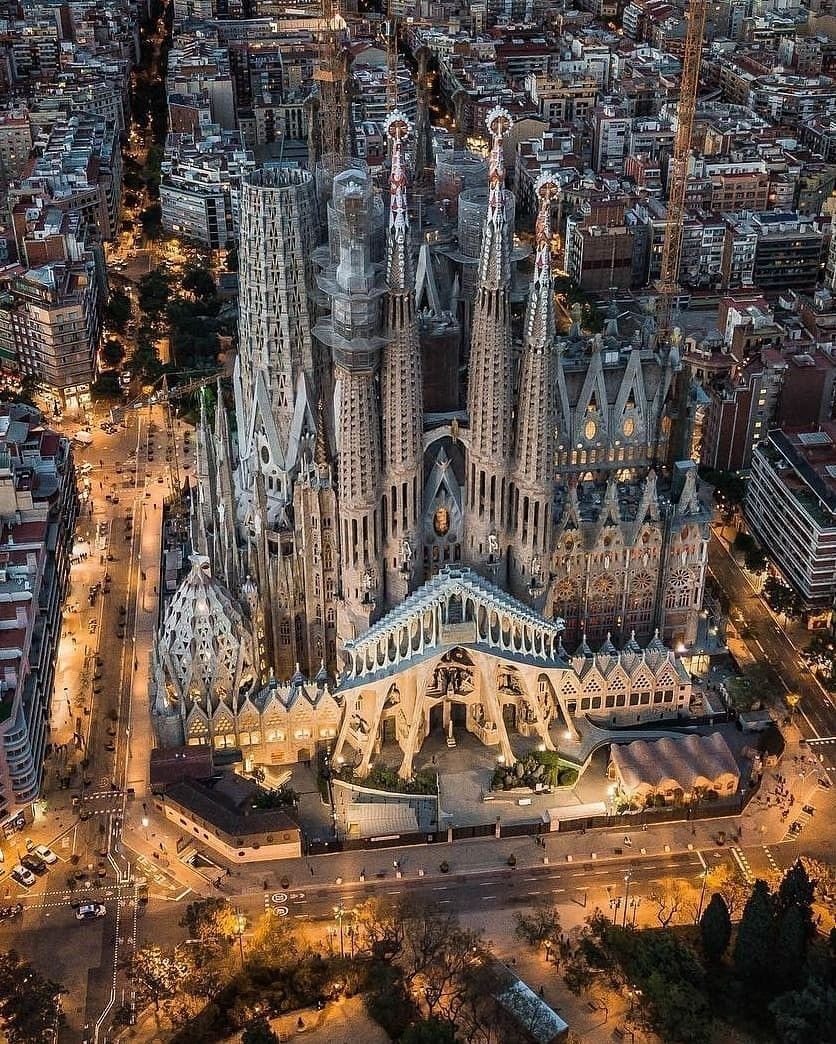
Have you ever walked through a city and noticed a building that made you stop in your tracks, leaving you awestruck and whispering to yourself, “What magic is this?” If you’ve been to Barcelona, chances are it’s one of Antoni Gaudí’s masterpieces that’s cast its spell on you. This blog dives into the world of Gaudí, arguably the most famous architect of all time! whose name resonates with innovation, creativity, and a touch of whimsy that seems to transcend the bounds of conventional architecture.
Antoni Gaudi, born in 1852 in Reus, Catalonia, was not just an architect; he was a visionary who painted his dreams in the concrete canvas of Barcelona and beyond. Gaudí’s style is instantly recognizable, characterized by vibrant colors, intricate mosaics, and forms inspired by nature. But what truly sets Gaudí apart?
The Masterpieces that Whisper Stories
Sagrada Família: A Symphony in Stone
Gaudí’s work is concentrated in Barcelona, with his crowning jewel being the still-unfinished Sagrada Familia. This colossal basilica is a testament to Gaudí’s unparalleled imagination and dedication. Here, every facade tells a biblical tale, every pillar is an outstretched tree limb, reaching for the heavens. Gaudí’s work on the Sagrada Familia is a symphony in stone, a place where spirituality and art dance in eternal harmony.
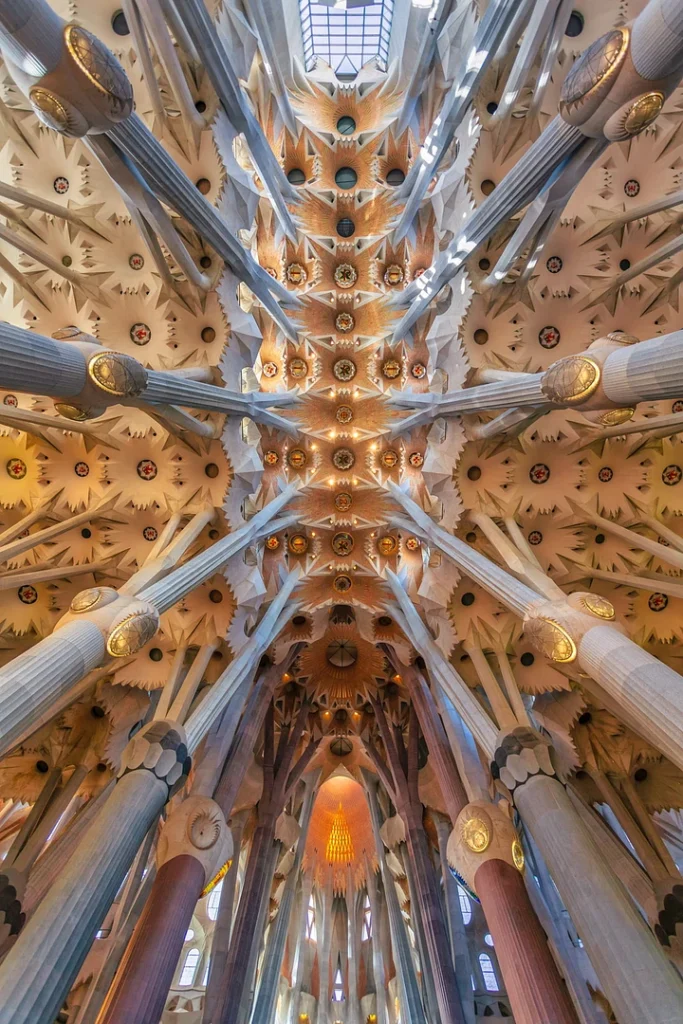
Construction of the Temple Expiatori de la Sagrada Família began in 1882, more than a century ago. The temple is still under construction, with completion expected in 2026. It is perhaps the best known structure of Catalan Modernisme, drawing over three million visitors annually.
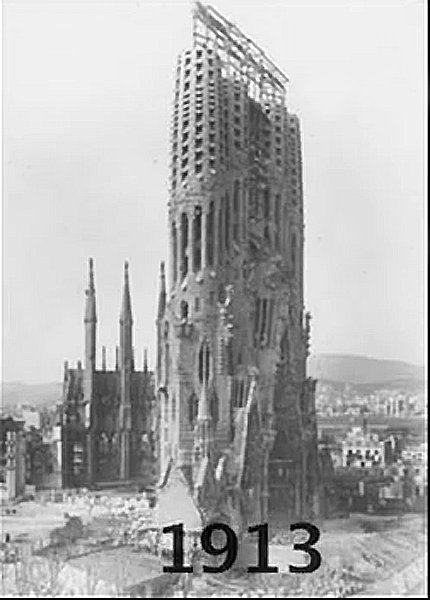
Gaudi embedded religious symbolism in each aspect of La Sagrada Familia, creating a visual representation of Christian beliefs. He designed three iconic facades for the basilica, the Glory, Nativity, and Passion facades, facing south, east, and west, respectively.
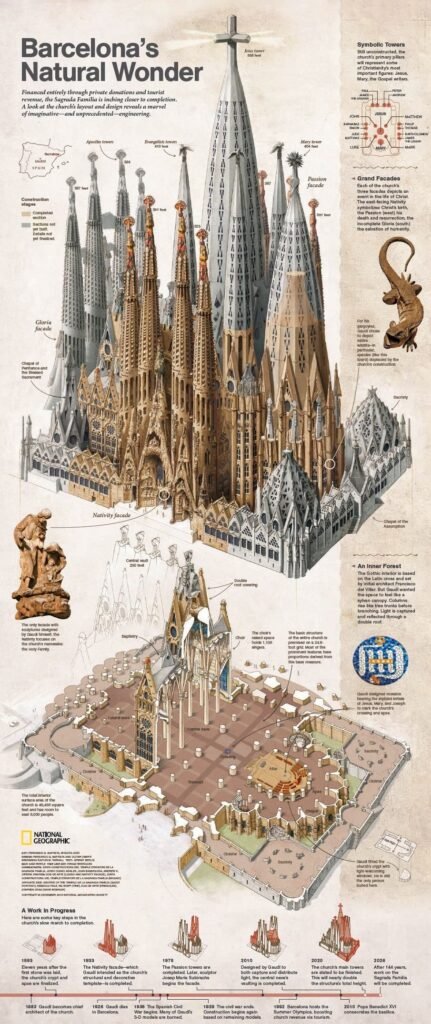
Gaudi was appointed architect in 1883 at 31 years of age, following disagreements between the temple’s promoters and the original architect, Francisco de Paula del Villar y Lozano. He maintained del Villar’s Latin cross plan, typical of Gothic cathedrals, but departed from the Gothic in several significant ways. Most notably, Gaudi developed a system of angled columns and hyperboloidal vaults to eliminate the need for flying buttresses. Rather than relying on exterior elements, horizontal loads are transferred through columns on the interior.
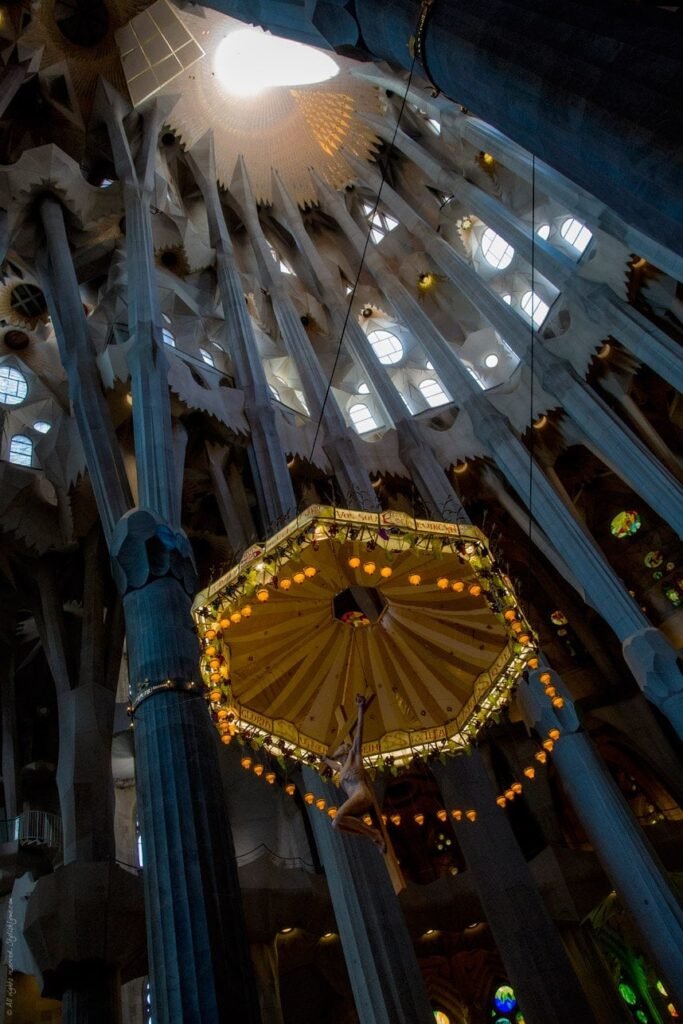
Park Güell: Where Nature and Architectural Fantasies Collide
Then there’s Park Guell, a vibrant mosaic of artistic ambition and natural beauty. Initially intended as a residential garden city, it is now a public park that offers breathtaking views of Barcelona. The serpentine benches, the salamander sculpture, and the whimsical gatehouses look like they’ve sprung from the pages of a fairytale.


Casa Batlló: The House That Stands Out
Casa Batlló and Casa Milà, also known as La Pedrera, are other stellar examples of Gaudí’s work. These buildings shun straight lines for undulating facades and roofs that resemble the back of a dragon. Inside, every detail, from the door handles to the staircases, is a piece of art, meticulously designed to create a unified aesthetic experience.
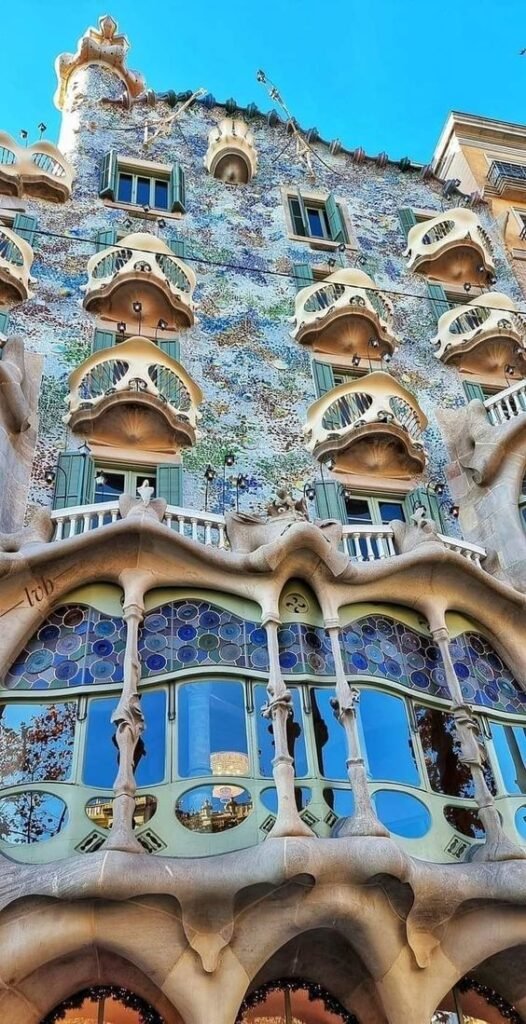
The inspiring imagination of Antoni Gaudí undoubtedly reveals itself in one of his most poetic and artistic designs for a building, Casa Batlló. His synthesis of animal shapes, vine-like curves, hints of bone and skeleton, and his use of lustrous colored bits of glazed ceramic and glass create a masterpiece that will forever astonish its observers.
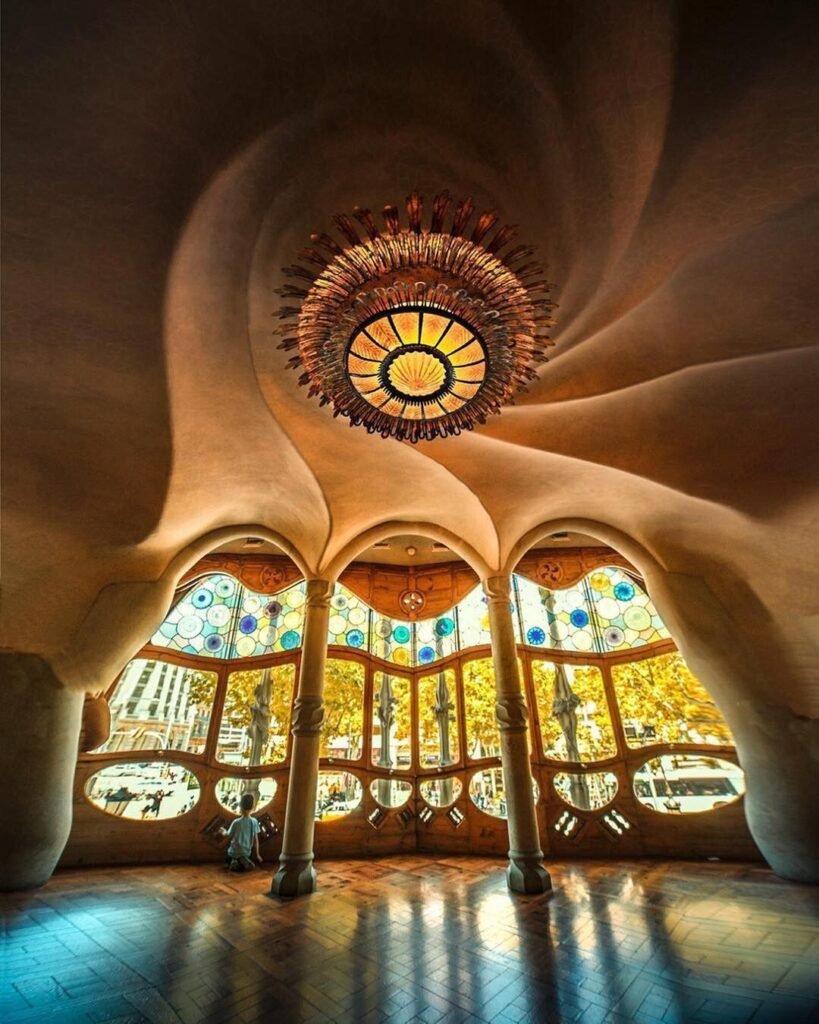
His style encompasses all that defines the Art Nouveau, a School of French decorative artists from the 1890s who took influence from sinuous shapes in plants and nature.

He explored his interests in flowing shapes, patterns and colors in the Casa Batlló, which was designed for the wealthy cotton baron Josep Batlló as a jolting contradiction to the rigid forms that surround it.
A Legacy Cast in Stone
Gaudí’s influence extends beyond his buildings. He’s inspired countless architects, designers, and artists around the world, proving that architecture is not merely about creating structures but evoking emotions and crafting experiences.
Gaudí once said, “The straight line belongs to men, the curved one to God.” In every curve of his creations, Gaudí embedded a piece of his soul, a dash of his eccentric genius, making his work immortal.
Today, Gaudí’s masterpieces are UNESCO World Heritage Sites, drawing visitors from across the globe. But more than that, they serve as a reminder that architecture, at its core, is about pushing boundaries, imagining the impossible, and daring to bring those dreams to life.
In conclusion, Antoni Gaudí’s legacy is not just in the stone, glass, and iron of his buildings. It’s in the courage to envision a world beyond the conventional, to blend creativity and functionality in ways previously unimagined. Gaudí showed us that buildings could be poems, prayers, and portals to new dimensions. So, next time you find yourself in Barcelona, standing before a Gaudí masterpiece, remember you’re not just looking at a building; you’re witnessing a dream sculpted into reality.
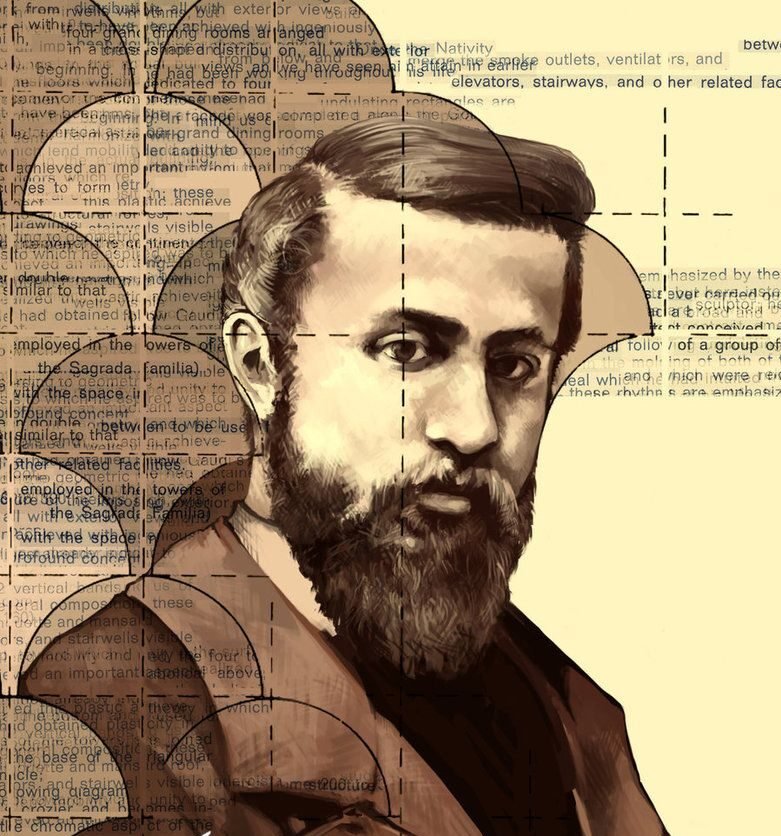
Leave a Reply